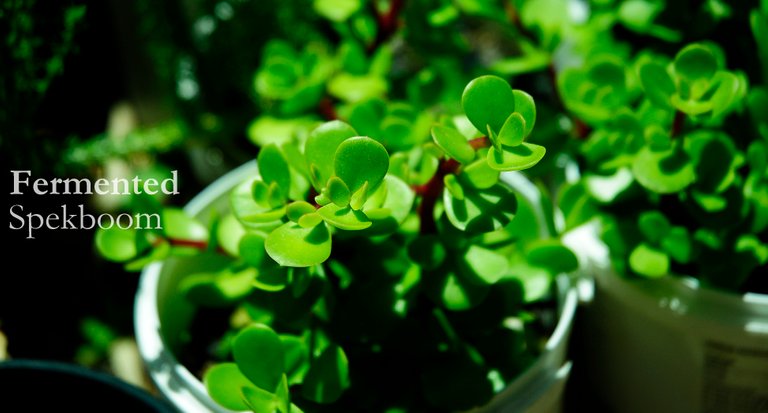
There is a plant (shrub/tree) that can be as effective as rainforests to sequester carbon, that you can eat, and that is fire and drought resistant. There is a plant from South Africa that is still used medicinally to treat skin diseases and is commissioned by the government to be planted to help with carbon offsetting. The Spekboom (Portulacaria afra/Purslane Tree) is this miracle plant that comes from South Africa and grows as an ornamental plant in many people's gardens. My grandmother grew various spekboom plants that grew to 2 meters high. I do not know if she ever knew of the culinary, medicinal, or environmental effects.
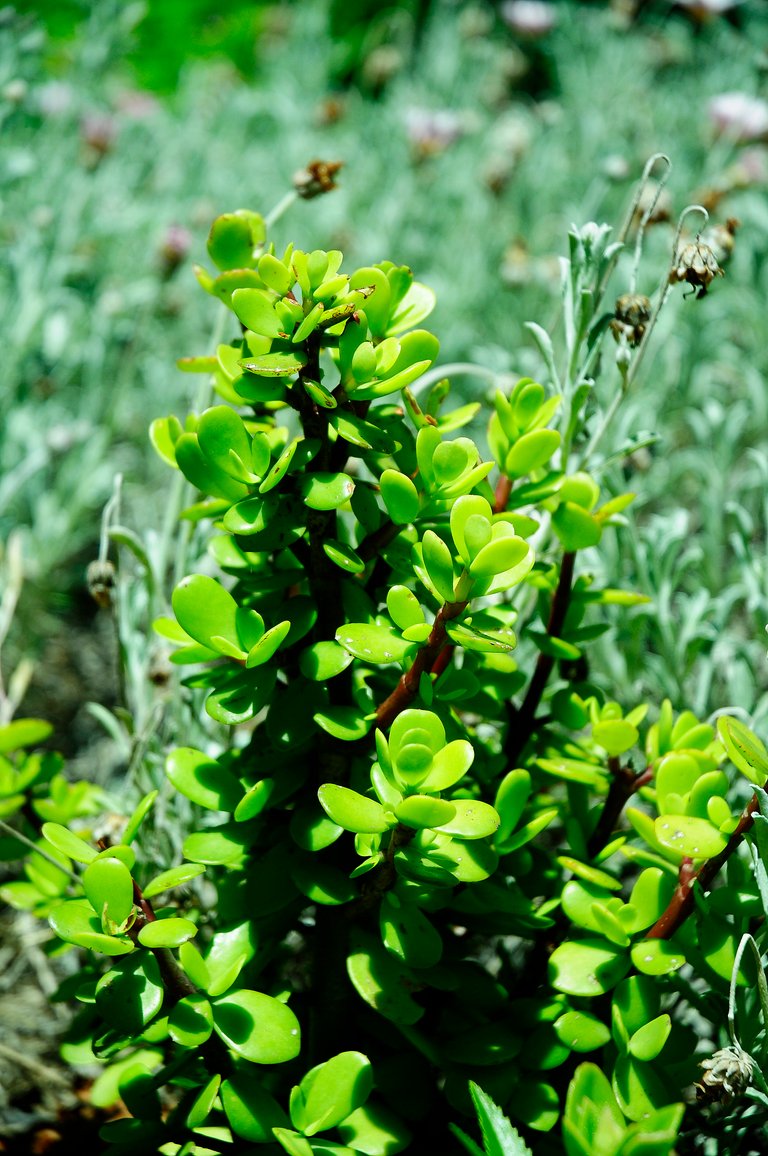
In this post, I want to introduce this magical plant to you, firstly, through its incredible carbon sequestering capabilities, secondly, through its culinary use, and thirdly, through its ease of making cuttings and new plants. I really hope you learn something from this post and that you might introduce this plant into your garden.
(As per usual, please do not consume anything you did not positively identify or grew yourself. Consuming plants can be dangerous if you are not responsible. But consuming plants are very healthy. Be creative, experiment, and enjoy this awesome journey.)
Spekboom, an Interesting name, or Purslane Tree
Literally translated, the term spekboom means bacon tree. Only if. But the two more appropriate English names, Elephant's food or purslane tree is more fitting.
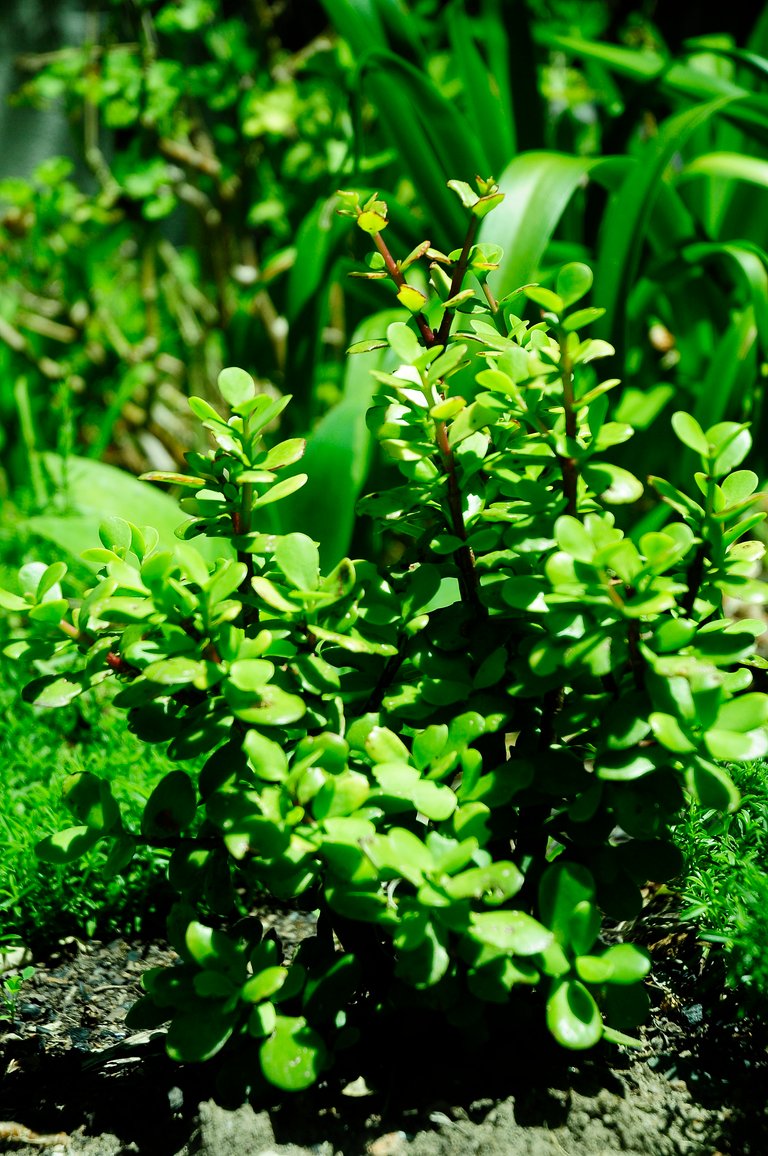
Firstly, Elephant's food is more fitting because elephants in the southern region of Africa where the spekboom grows can eat up to 200 kg of spekboom daily. (A note about the source, the website is not available anymore. I am using the wayback machine, or internet archive, to access the website.)
The other name, Purslane tree, is also fitting as the similarities between purslane and spekboom is striking. In fact, I normally combine the two in my salads and chutneys (keep an eye out for my future posts for a recipe coming soon). And the two pairs so well. Both have succulent properties and both have a lemony taste. But spekboom is much sourer and tart.
See the photograph of common purslane below. Except for the color, you can see the similarity in leaf structure and the stems almost look similar.
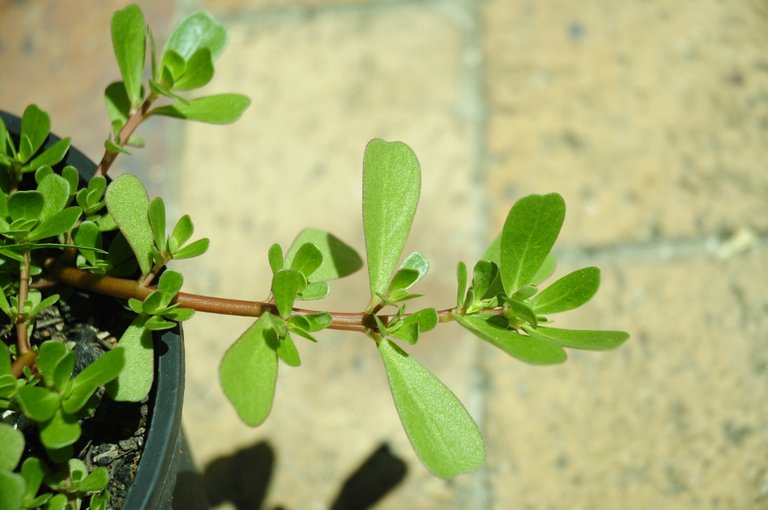
Carbon Sequestering Power
Climate change and ways of reversing our footprint on the earth is hot topics. When people begin to talk about the spekboom's ability to sequester carbon, people always listen attentively. Recently, I and another person Hive talked a bit about this, as he wants to plant a mature tree in front of his aircon. Many sources will claim about its impressive ability to offset our carbon footprint, like this shoe factory. However, we need to be, as philosophers and creative thinkers, a little bit critical as well. As this article alludes to, it is only in spekboom's natural habitat that they sequester these amazing quantities of carbon. But this does not take away from their immense ability to store carbon. Spekboom can, for example, capture up to a 100 times more carbon from the atmosphere than pine trees. However, and again, this is in their natural habitat between other indigenous plants. Yes, planting them in your garden will help, but it might not be as effective as in their natural habitat.
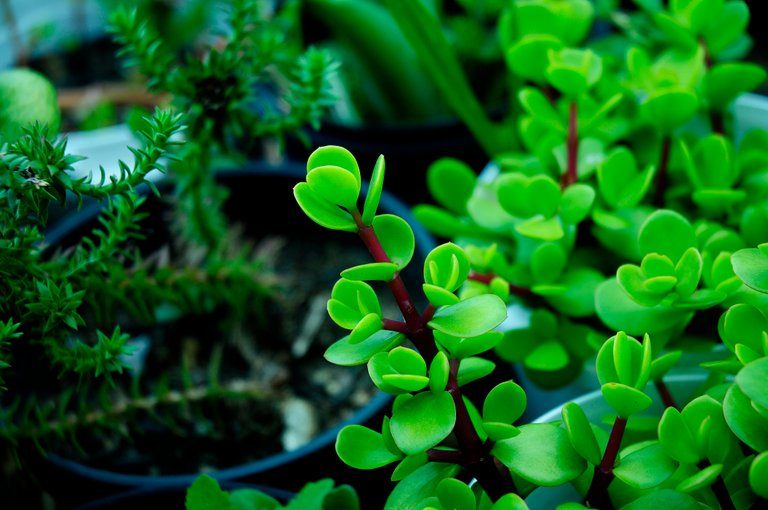
Easy Growers: Cuttings and New Plants
It is interesting to note, spekboom grows back easily after, for example, elephants ate them from the top. But when smaller grazing animals like deer and sheep eat them from the bottom, they do not grow back so easily. Moreover, when elephants and bigger animals eat them from the top, small pieces of the spekboom fall to the ground where they easily grow into new plants. Smaller grazing animals, for obvious reasons, also eat the smaller pieces that fall to the ground, thus prohibiting the plants from growing back.
Even though this might be the case, we as humans can help with this process.
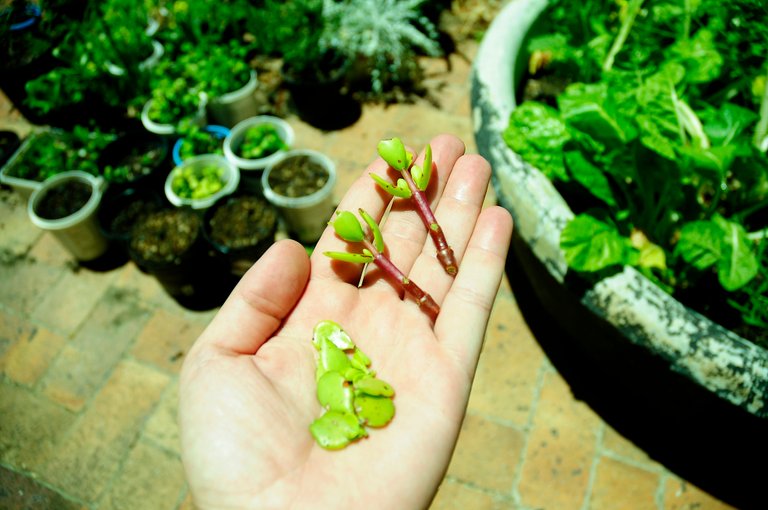
Cuttings take very easily and some people even claim that you can just stick it in the ground and you will have a new plant!
When harvesting the leaves for my salad or chutney, I always take care to make these types of cuttings (see the photograph above).
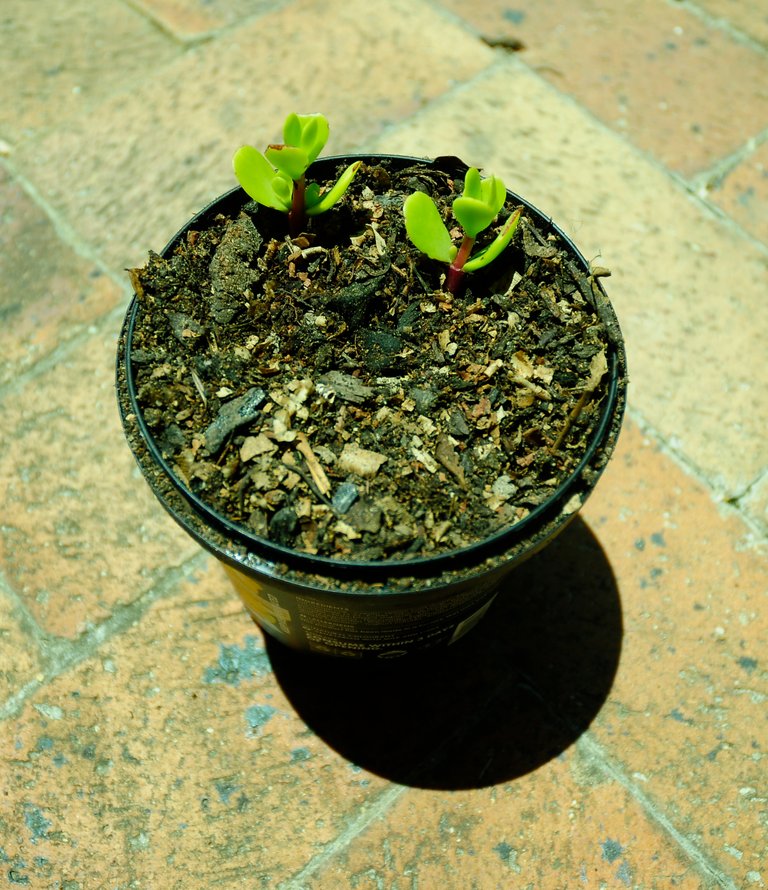
I never let mine grow too big because I always make more cuttings. And I harvest them for food (see the section below).
I then just stick them into the ground and water them regularly. As spekboom prefer summer rainfall, it helps to water them. We fall in a winter rainfall area, so it gets very dry in the summer. The established plants are fine, but the smaller ones struggle.
I took a photograph this morning of the cuttings after a week or two, and you can see new growth! There are baby leaves coming from the side.
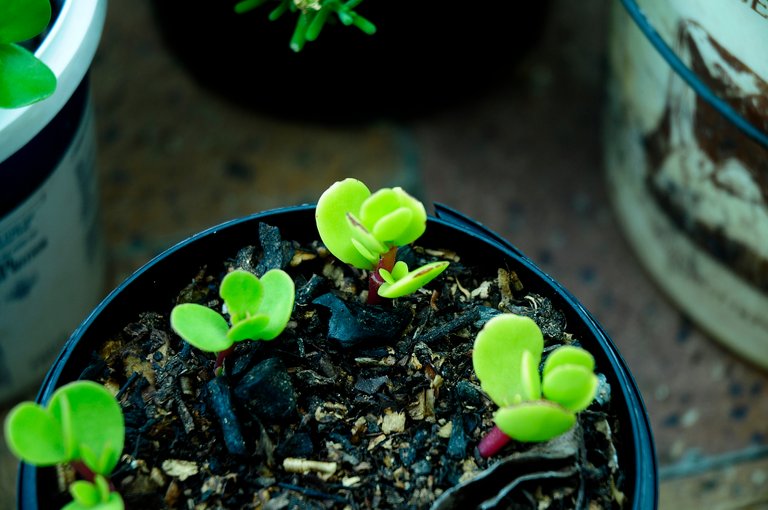
Moreover, when you make the cutting where new leaves begin, you can see there will be even more foliage growth, as the photograph to the right shows:
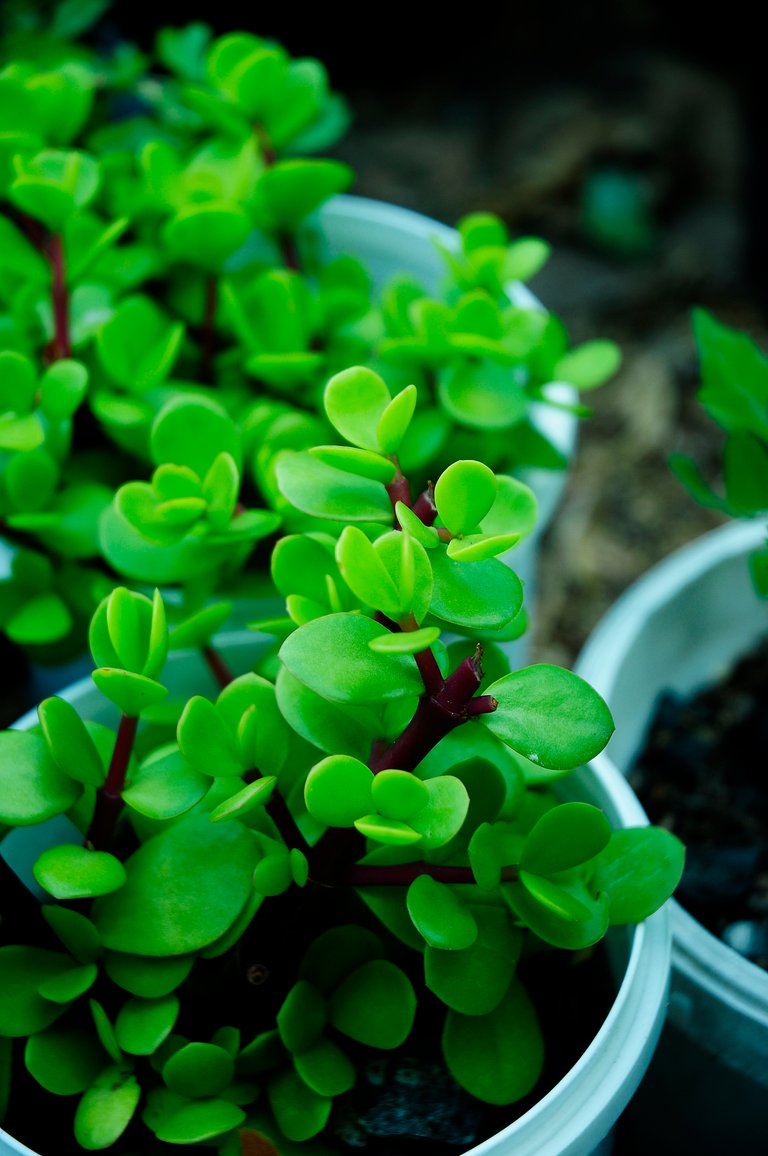
Using Spekboom as Food and Medicine
There are various medicinal uses for spekboom and spekboom leaf juice. From applying it topical to skin diseases to helping mothers lactate better, there are various uses for this resourceful plant.
I, however, love to use this plant for two reasons. Firstly, the sour taste is excellent in a salad or chutney, and, secondly, it is so good for binding and healing the soil. In due time, I will post my spekboom and purslane chutney recipe. I gave some to my girlfriend, and she loved it. I trust her opinion. Jokes aside, it is really awesome and something to experience. As it uses food that you cannot buy, it necessitates that you grow it yourself.
The leaves are high in:
I have written about my stance on reducing plants to their micro-elements, and I do not look at this information when I eat them. A diet rich in homegrown greens is superior to any other diet in my opinion. But this is only my viewpoint.
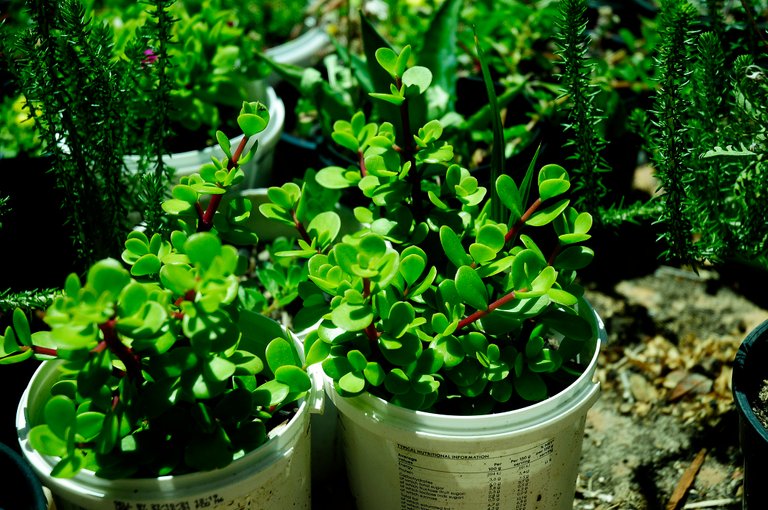
Postscriptum, or Cheers to the Bacon Tree
I can write much more about this awesome plant. But it needs to be said that superfoods and superplants alike need rational minds and critics to bring them back to "earth". Literally. We need to realize as mentioned in the post, that we cannot immortalize a plant and make broad statements that might be stretching reality a bit. However, we should also acknowledge that a potato that we have cultivated for various industrial needs (like fast food) is not the same to natural plants serving no commercial, industrial or capitalist needs. Natural is not always natural.
In any case, I hope you learned something from this post, and that you might get to try this awesome plant. Do not destroy your environment to plant this plant in your area if it is not indigenous. But maybe plant it in a small container, and harvest its leaves for your next salad!
All of the photographs are my own, taken with my Nikon D300, and all of the information is my own unless linked or stated otherwise. Happy gardening, be safe, and let us practice herbal medicine responsibly together!
I've known about the spekboom for a while but didn't know how easily it propagates! I'm definitely going to get a few of these going in and around the house. Have you ever grown it indoors, as a houseplant?
Never tried yet, but they do very well in the small containers that I grow the cuttings in. So they will probably do well! Just let them get enough sunlight and well-draining soil, and I think they will do very well. I can give you some established cutting plants, or you can "ethically source" some from a lady's garden in Stellies! haha